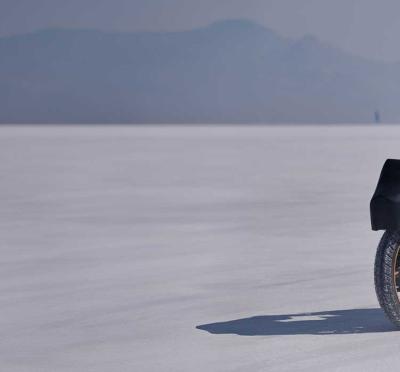In just a few short years, Oregon State University’s branch of AIAA (American Institute of Aeronautics and Astronautics) has gone from novices to top-tier contenders in collegiate rocketry competitions.
This September, they reached a new milestone high above the Black Rock Desert of Western Nevada.
The Oregon State AIAA’s HART (High Altitude Rocket Launch Team) successfully launched a two-stage rocket to an altitude of 80,000 feet, a record for Oregon State and one of the highest launches ever for a university team.
“This is a truly amazing feat for a team of engineering undergraduates,” said Nancy Squires, a senior instructor in the School of MIME and the team’s advisor.
The project began with a discussion in Green River, Utah, at the Experimental Sounding Rocket Association (ESRA) rocket engineering competition with SpaceX recruiters, who wondered what university engineering students could do with a “sky’s the limit” rocket.
So began a senior capstone design project at Oregon State with the goal of building a rocket to reach as high an altitude as possible within a Class 2 FAA waiver, which limits the amount and energy of propellant the rocket motor can contain.
A team of students (12 mechanical engineering, three electrical engineering, and three computer science) started the design of a two-stage rocket in September 2016. The team added another six mechanical engineering students to design and build a tower that would be required to launch a high-altitude rocket.
The team faced several technical challenges in the design stage—a propulsion system that required a very specific burn rate at liftoff in the booster stage and a faster burning motor for the upper stage; electronics that would fire black powder charges to separate the rocket stages and deploy two parachutes; extensive testing to characterize the properties of black powder at very high altitudes; an innovative front-end ignition system integrated into the rocket airframe; a system to track and recover both stages of the rocket at all phases of the trajectories; a carbon-fiber and fiberglass airframe; and a new composite fin that could withstand the Mach 2.2 speed and 18-g forces.
The day after graduation, the team embarked on the two-day drive to Spaceport America in Las Cruces, New Mexico. Unfortunately, in the first full-range flight, their rocket, named Probatum, encountered a devastating upper-stage motor failure.
In spite of a very disappointing outcome at Spaceport, the team was determined to launch the rocket again.
The flight did confirm that the designs of the more challenging components of the rocket and recovery were successful. So when the team had the opportunity to participate in the Balls of Fire launch in Black Rock later in the summer, they jumped back in.
The team arrived at Black Rock with a redesigned upper-stage nozzle and new booster and upper-stage motors.
The day started early with rocket assembly and preparation, ideal weather conditions, and the push of a button. The day ended with a lot of cheering after a great success, with perfect motor staging and airframe performance. Both GPS data and onboard altimeters measured an altitude of 80,000 feet.
The benefits of this program to students are easy to quantify: Most of the students on the team who graduated are now employed in the aerospace industry or enrolled in graduate programs. Team members are working professionally at companies, including SpaceX, Blue Origin, Orbital ATK, United Launch Alliance, Aerojet-Rocketdyne, Raytheon, and the Naval Weapons Facility China Lake. They have demonstrated the skills required to solve challenging technical problems, and they have shown exceptional dedication, leadership as a team, and passion for aerospace.
Up next for Oregon State: A new team of mechanical and electrical engineering and computer science senior capstone students is already underway for the design and manufacturing of a new two-stage rocket. Their ultimate goal is to exceed the current university record of 144,000 feet at Spaceport America in June 2018.



